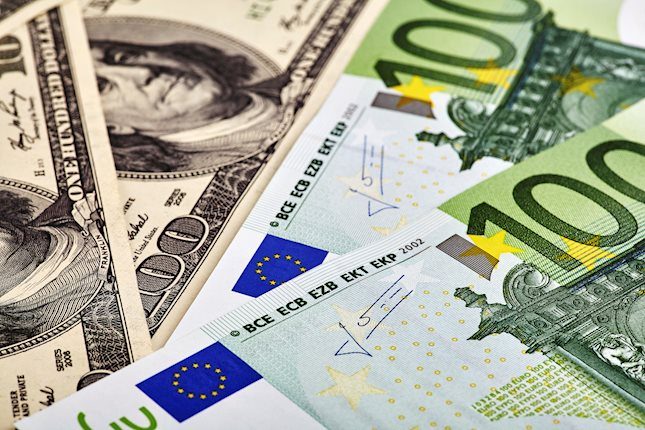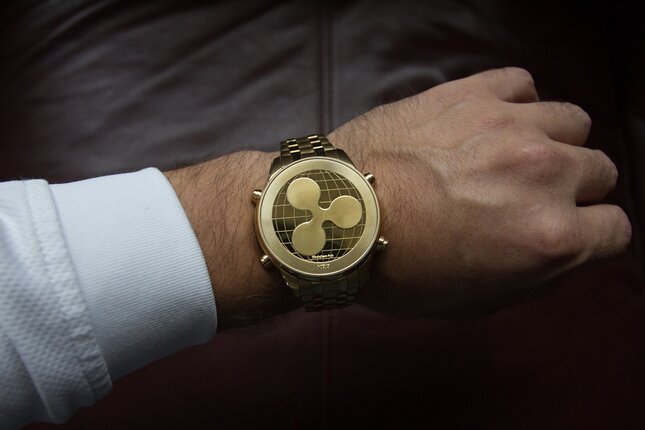- EUR/USD sinks to near 1.0530 as the US Dollar extends its rally as Republicans win both houses in the US.
- The US inflation accelerated expectedly in October, which boosted expectations of an interest rate cut in December.
- Investors await Fed Jerome Powell’s speech on Thursday for fresh interest rate guidance.
EUR/USD posts a fresh annual low near 1.0530 in European trading hours and extends its losing streak for the fifth trading day on Thursday. The major currency pair has faced an intense sell-off as the US Dollar (USD) continues to enjoy upside momentum, being one of the major beneficiaries of President-elected Donald Trump’s win in the United States (US) presidential election. The US Dollar Index (DXY), which gauges the Greenback’s value against six major currencies, climbs to near 106.80, the highest level seen since November 1, 2023.
It will be easy for Trump to implement the agenda of lower taxes on businesses and workers, as well as high import tariffs, as Republicans have ensured control of the Senate and the House of Representatives, according to the Associated Press.
An increase in import tariffs would increase the demand for domestically produced goods and services, which would boost inflationary pressures that limit the potential of the Federal Reserve (Fed) to cut interest rates faster and deeper.
The Greenback rose sharply on Wednesday after the release of the US Consumer Price Index (CPI) data for October. The inflation report showed that price pressures grew expectedly on a monthly as well as annual basis, boosting expectations of interest rate cuts in the December meeting. According to the CME FedWatch tool, the probability of the Fed cutting interest rates by 25 basis points (bps) to 4.25%-4.50% next month increased to 83% from 59% a day before.
In Thursday’s session, investors will pay close attention to Fed Chair Jerome Powell’s commentary in a panel discussion hosted by the Federal Reserve Bank of Dallas at 20:00 GMT. Market participants would like to know his stance on December’s monetary policy decision and the impact of Trump's policies in the medium and longer term.
On the economic front, investors will focus on the US Initial Jobless Claims for the week ending November 8 and the Producer Price Index (PPI) data for October, which will be published at 13:30 GMT.
Daily digest market movers: EUR/USD declines as ECB Rehn sees neutral rate coming in first half of 2025
- EUR/USD remains on the backfoot amid Euro’s (EUR) more than a week-long underperformance against its major peers. The Euro faces pressure from Trump’s victory in the US presidential election and the collapse of the three-party coalition government in Germany after Chancellor Olaf Scholz sacked Finance Minister Christian Linder on November 6.
- The implementation of Trump’s tariffs on the Eurozone is expected to dent its export sector significantly, which could weaken its overall Gross Domestic Product (GDP) growth and result in further depreciation in the Euro.
- Big banks, including JPMorgan and Deutsche Bank, reckon a drop to parity could happen, depending on the extent of tariffs. Tax cuts could also fuel US inflation and limit Federal Reserve interest rate cuts, making the Dollar potentially more attractive than the Euro, Reuters reported.
- Meanwhile, expectations for the European inflation remaining under control have prompted expectations of more interest rate cuts by the European Central Bank (ECB). ECB Governing Council Member and Bank of Finland Governor Olli Rehn commented on Tuesday that the Deposit Rate could decline the so-called neutral rate in the first half of 2025. According to the ECB staff, the neutral rate is around 2% or 2.25%.
Technical Analysis: EUR/USD sees more downside as all short-to-long-term EMAs turn downwards
EUR/USD slides to its lowest since November 1, 2023, near 1.0530. The major currency pair weakened after breaking below the April 16 low of 1.0600. The outlook of the shared currency pair has become bearish as all short to long-term Exponential Moving Averages (EMAs) are declining.
The 14-day Relative Strength Index (RSI) drops to nearly 30.00, adding to evidence of more weakness in the near term.
Looking down, the pair is expected to find a cushion near the psychological support of 1.0500. On the flip side, the round-level resistance of 1.0700 will be the key barrier for the Euro bulls.
ECB FAQs
The European Central Bank (ECB) in Frankfurt, Germany, is the reserve bank for the Eurozone. The ECB sets interest rates and manages monetary policy for the region. The ECB primary mandate is to maintain price stability, which means keeping inflation at around 2%. Its primary tool for achieving this is by raising or lowering interest rates. Relatively high interest rates will usually result in a stronger Euro and vice versa. The ECB Governing Council makes monetary policy decisions at meetings held eight times a year. Decisions are made by heads of the Eurozone national banks and six permanent members, including the President of the ECB, Christine Lagarde.
In extreme situations, the European Central Bank can enact a policy tool called Quantitative Easing. QE is the process by which the ECB prints Euros and uses them to buy assets – usually government or corporate bonds – from banks and other financial institutions. QE usually results in a weaker Euro. QE is a last resort when simply lowering interest rates is unlikely to achieve the objective of price stability. The ECB used it during the Great Financial Crisis in 2009-11, in 2015 when inflation remained stubbornly low, as well as during the covid pandemic.
Quantitative tightening (QT) is the reverse of QE. It is undertaken after QE when an economic recovery is underway and inflation starts rising. Whilst in QE the European Central Bank (ECB) purchases government and corporate bonds from financial institutions to provide them with liquidity, in QT the ECB stops buying more bonds, and stops reinvesting the principal maturing on the bonds it already holds. It is usually positive (or bullish) for the Euro.
Information on these pages contains forward-looking statements that involve risks and uncertainties. Markets and instruments profiled on this page are for informational purposes only and should not in any way come across as a recommendation to buy or sell in these assets. You should do your own thorough research before making any investment decisions. FXStreet does not in any way guarantee that this information is free from mistakes, errors, or material misstatements. It also does not guarantee that this information is of a timely nature. Investing in Open Markets involves a great deal of risk, including the loss of all or a portion of your investment, as well as emotional distress. All risks, losses and costs associated with investing, including total loss of principal, are your responsibility. The views and opinions expressed in this article are those of the authors and do not necessarily reflect the official policy or position of FXStreet nor its advertisers. The author will not be held responsible for information that is found at the end of links posted on this page.
If not otherwise explicitly mentioned in the body of the article, at the time of writing, the author has no position in any stock mentioned in this article and no business relationship with any company mentioned. The author has not received compensation for writing this article, other than from FXStreet.
FXStreet and the author do not provide personalized recommendations. The author makes no representations as to the accuracy, completeness, or suitability of this information. FXStreet and the author will not be liable for any errors, omissions or any losses, injuries or damages arising from this information and its display or use. Errors and omissions excepted.
The author and FXStreet are not registered investment advisors and nothing in this article is intended to be investment advice.
Recommended content
Editors’ Picks

EUR/USD stays pressured toward 1.0500, US PPI data next in focus
EUR/USD remains heavy toward 1.0500 in the European session on Thursday, hanging at yearly lows. The Trump trades-driven unabated US Dollar demand and tarrifs threat weigh on the pair. Mixed Eurozone data fail to lift the Euro. Eyes turn to US PPI data and Fed Chair Powell.

GBP/USD holds losses near 1.2650 on relentless US Dollar buying
GBP/USD is holding losses while flirting with multi-month lows near 1.2650 in European trading on Thursday. The pair remains vulnerable amid a broadly firmer US Dollar and softer risk tone even as BoE policymakers stick to a cautious stance on policy. Speeches from Powell and Bailey are eyed.

Gold price approaches 100-day SMA/50% Fibo. confluence amid sustained USD buying
Gold price touches its lowest level since September 19, around $2,550 area during the early part of the European session on Thursday. The US Dollar buying remains unabated in the wake of optimism over the expected expansionary policies by US President-elect Donald Trump.

XRP struggles near $0.7440, could still sustain rally after Robinhood listing
Ripple's XRP is trading near $0.6900, down nearly 3% on Wednesday, as declining open interest could extend its price correction. However, other on-chain metrics point to a long-term bullish setup.

Trump vs CPI
US CPI for October was exactly in line with expectations. The headline rate of CPI rose to 2.6% YoY from 2.4% YoY in September. The core rate remained steady at 3.3%. The detail of the report shows that the shelter index rose by 0.4% on the month, which accounted for 50% of the increase in all items on a monthly basis.

Best Forex Brokers with Low Spreads
VERIFIED Low spreads are crucial for reducing trading costs. Explore top Forex brokers offering competitive spreads and high leverage. Compare options for EUR/USD, GBP/USD, USD/JPY, and Gold.
-638671684851727247.png)